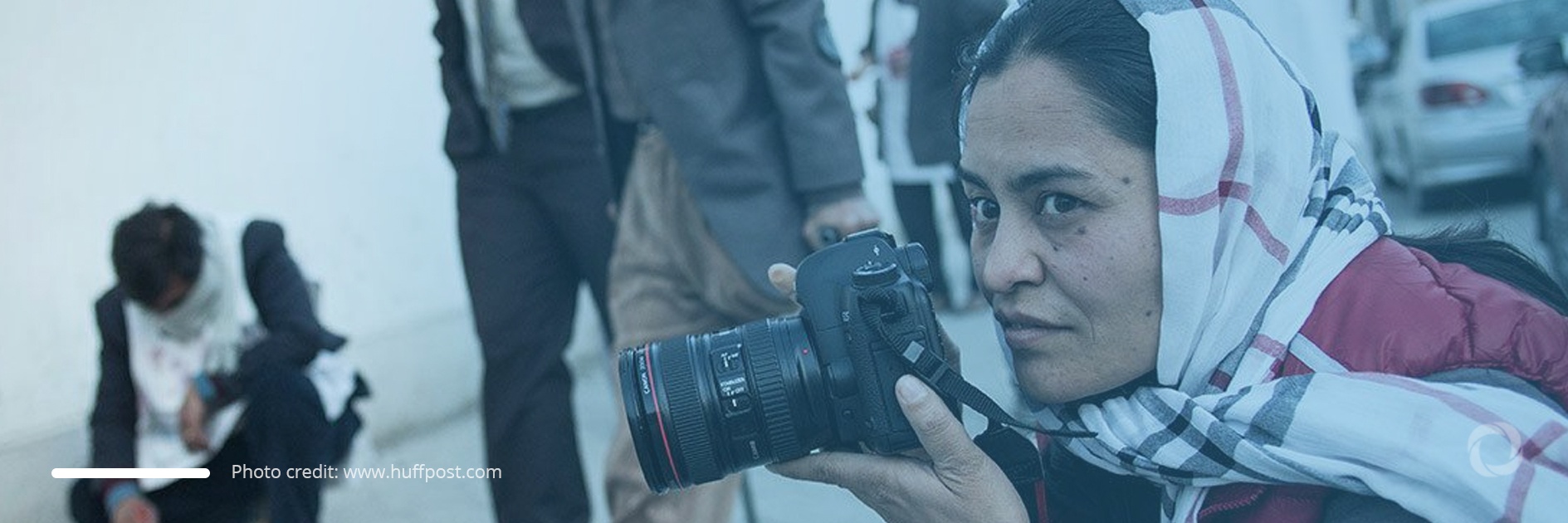As the Taliban took power in embattled Afghanistan by entering its capital Kabul this August, women, and girls, as well as female journalists, have voiced fear for their lives and safety. The memory of the hostilities during the Taliban’s first term in power from 1996 to 2001 is still too fresh. Being beaten for not wearing a burqa or for having their nails painted, being forbidden to leave the house without a male guardian, being punished for the simple reason of being perceived as too independent, being forced to get married while still being a child, being forbidden to go to school are just some of the atrocities that women and girls were forced to face back then.
Concerned about the safety, education, work, and mobility of Afghan women and girls, the European Union and 20 other countries have called for their protection to be guaranteed while international media rights bodies, including the Committee to Protect Journalists (CPJ) and the Public Media Alliance (PMA), have urged that the safety of Afghan journalists is ensured and that urgent safe passage and emergency visas for journalists and their families who wish to leave are also facilitated.
The status of women and girls
Co-signed by Albania, Argentina, Australia, Brazil, Canada, Chile, Colombia, Costa Rica, Ecuador, El Salvador, European Union, Honduras, Guatemala, North Macedonia, New Zealand, Norway, Paraguay, Senegal, Switzerland, the United Kingdom, and the United States of America, the joint statement issued on August 18 reads:
It added that how any future government ensured the rights and freedoms that have become an integral part of the life of women and girls in Afghanistan during the last twenty years would be closely monitored.
Safety of media and women journalists
Emphasizing that the United States has a special responsibility to Afghan journalists who created a thriving and vibrant information space, on August 16, Joel Simon, CPJ Executive Director, said:
“The Biden administration can and should do all within its power to protect press freedom and stand up for the rights of the vulnerable Afghan reporters, photographers, and media workers.”
- CPJ has registered and vetted the cases of almost 300 journalists who are attempting to reach safety with hundreds more cases under review
- Due to the deteriorating security situation at the airport, only a handful have been able to board a flight to the U.S. or a third country
- The vast majority of the journalists under threat remain in hiding
- CPJ has also registered and vetted 45 high priority cases of Afghan journalists in which the threat from the Taliban is clear and looming
- Many of these are female journalists whose record of reporting on women’s rights has exacerbated the risk to them
- CPJ has registered and vetted 127 other cases of Afghan media members who face significant risk along with 119 journalists affiliated with U.S. news outlets
- It has received an additional 475 email requests for assistance which are undergoing review
- The CPJ documentation shows that at least 53 journalists have been killed in Afghanistan since 2001
- Human Rights Watch Report shows that with women journalists outside the major cities facing risk, dozens of female journalists have faced attacks or left the country
“We are deeply concerned by the perilous and terrifying situation faced by many journalists and in particular, women journalists, in Afghanistan. We call on the international community to facilitate safe passage urgently for those wanting to leave,” the PMA statement issued on August 18 reads.
The Taliban have historically established themselves as an enemy of press freedom and have been behind a number of attacks on journalists and media workers in recent years, it added.
Hundreds of journalists are among those attempting to flee Afghanistan for fear of persecution. There have been 112 violent incidents against journalists in the country over the past year with seven having been killed – the highest number worldwide. The international community is watching closely how the Taliban, which remains highly hostile to the media and women, treats these groups after its retaking of Afghanistan.

